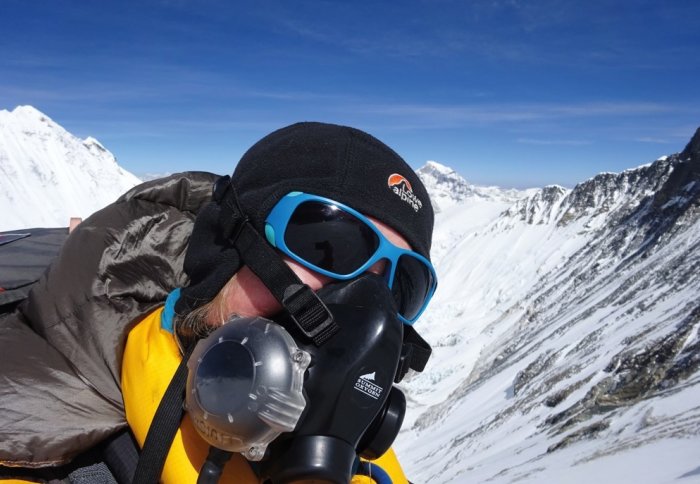

Imperial's Dr Melanie Windridge takes on Everest in the name of science and adventure.
There’s almost an entire sub-genre of literature and film dedicated to dramas, tragedies and controversies on Everest – whether its killer storms, avalanches, queues for the summit, discord among teams and also littering and environment damage.
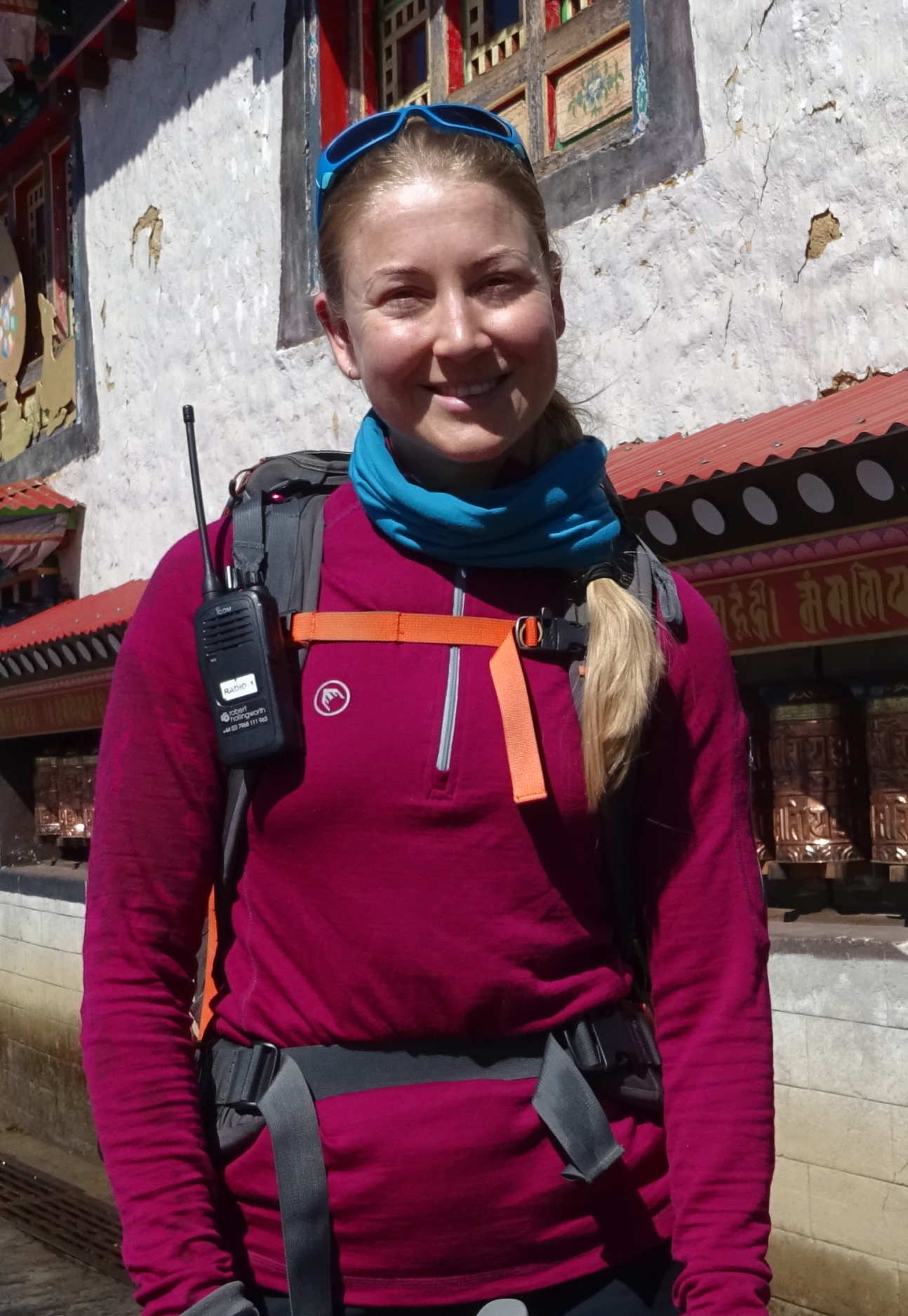 Thankfully, Dr Melanie Windridge, Imperial alumnus, scientist, author and speaker, encountered little of this on her recent successful summit bid in May – and she takes typically pragmatic view on the issues.
Thankfully, Dr Melanie Windridge, Imperial alumnus, scientist, author and speaker, encountered little of this on her recent successful summit bid in May – and she takes typically pragmatic view on the issues.
“Of course there have been very real, harrowing tragedies up there, but there can perhaps be a tendency to over-dramatize things a little as well, particularly for the benefit of the press. In reality, the very last thing you want on Everest is drama, and I’m glad there was none.
I thought ‘oh my gosh this must be the summit ridge!’
“My main goal, above everything else, was to come back in one piece. And I think there is a lot you can do to increase the chances of that happening. Have the right kit, make best use of the technology, go with the right company – management is crucial – listen to experts’ advice and understand where the risks are likely to occur.”
Science, adventure and outreach
Melanie, who completed her Imperial PhD in plasma physics in 2009 and remains an Academic Visitor in the Department of Physics, has carved out something of a niche at the interface between science, exploration and adventure.
With a professional interest in plasma physics through her work as a consultant for Tokamak Energy, she undertook an arctic adventure to explore a naturally occurring plasma phenomenon in the form of the Aurora or Northern Lights. After, she wrote a successful book Aurora: In Search of the Northern Lights – covering science, folklore and people’s relationships with the lights.
Everest was a very slowly gestating seed for Melanie. Trekking, skiing and ski touring (a combination of the two) had always been part of her repertoire and she steadily increased the scale and difficulty of the challenges – to include Africa’s highest peak, Kilimanjaro (5,895m); South America’s highest peak, Aconcagua (6,960m); a cyclone- thwarted attempt at Himalayan peak Putha Hiunchuli (7246m) as well as skills-building climbing trips to the European Alps.
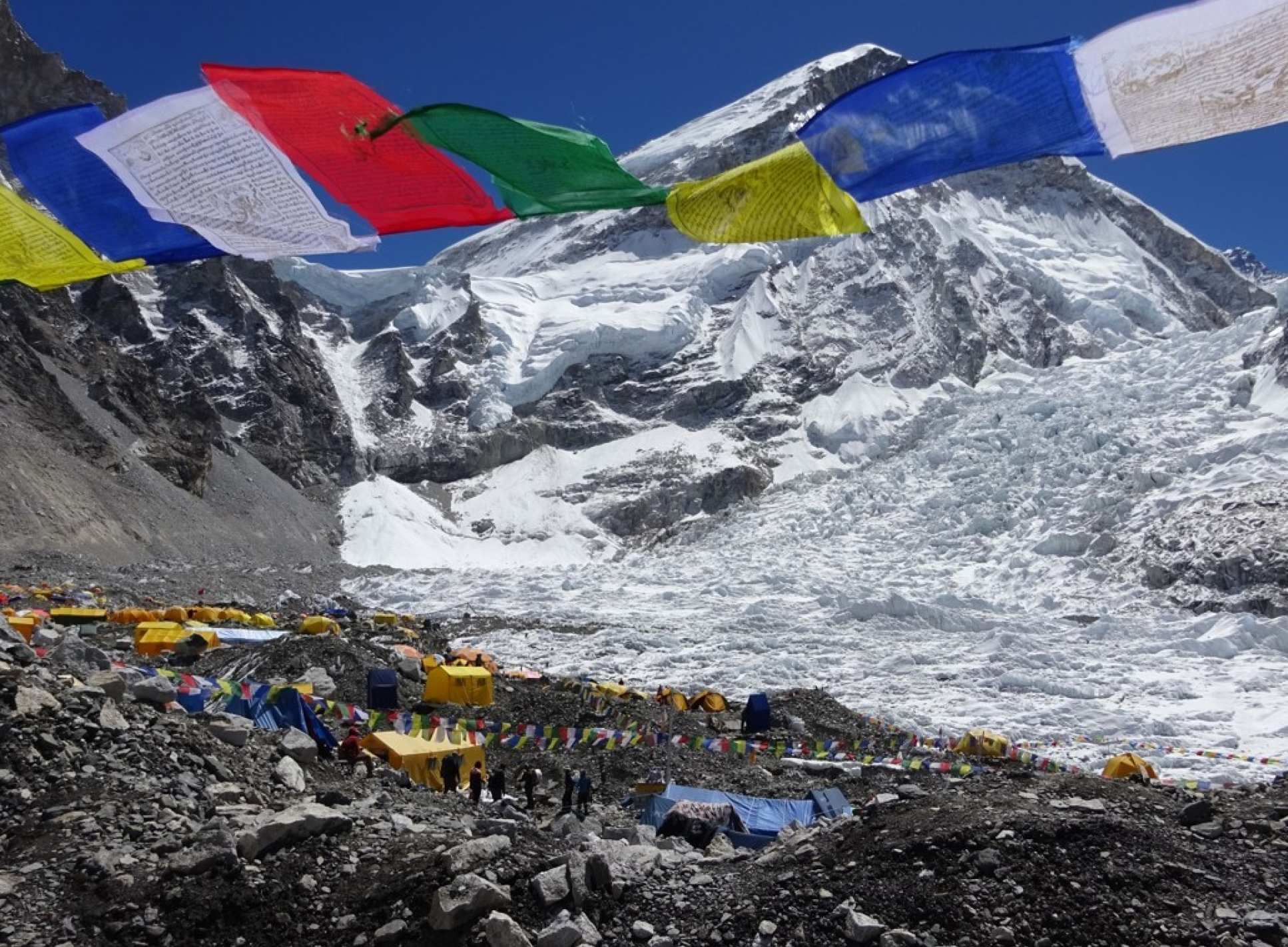 One recollection is perhaps very telling of her inner resolve and spirit.
One recollection is perhaps very telling of her inner resolve and spirit.
The death rate is going down and a lot of the improvements in safety and performance are to do with science.
“I went trekking to Nepal after university and chose to do the Annapurna Circuit and not the popular Everest Base Camp trek, partly because I knew in my heart that getting as far as Everest base camp and turning back without going further would just annoy the hell out of me!”
The definitive decision to climb Everest (8,848m) probably came in around 2013 (though she didn’t actually tell anyone then) when she was asked to help with preparations for the formal 60th anniversary celebrations of the first ascent of Everest in 1953. As part of the preparations, she started to read and learn more about the history of the mountain and met and mingled with people who had climbed Everest.
“I also began to realise that science was fundamental to getting up Everest in the 50s – the reason they hadn’t got up in the 30s or 20s was because of the state of science and technology and their appreciation of its importance. Understanding of physiology, nutrition, clothing, tents, boots, and oxygen made such a difference. That process continues to this day as well. The death rate is going down and a lot of the improvements in safety and performance are to do with science. I don’t think people fully realise that. I wanted to highlight that in the context of my own Everest bid.”
What emerged was the ‘Science of the Summit’ outreach project comprising a stage-by-stage live blog of the summit progress; a YouTube video series (see link below); snow pollution sampling on the mountain; speaking engagements at schools, colleges and festivals; and possibly even a book at some stage as well. Melanie self-funded the trip – with some additional support and sponsorship, including from Imperial, for the outreach component of the project.

A vertical journey
And so at the beginning of April 2018, she found herself on a plane to Nepal’s capital, Kathmandu, connecting onwards to Lukla and the villages of Namche Bazaar (3440m) and Pengboche (3930m) for what marks the start of very a long period of acclimatisation.
Progressing slowly up the mountain and giving the body time to acclimatise is really important when climbing at high altitude. As we get higher the air gets thinner (the air pressure reduces) and in every lungful of air we breathe, we get less oxygen than at sea level.
As I was coming off I did a big step at the end and skipped a rung and my back crampon caught and it flipped me
This means that the body has to adapt to use less oxygen for normal functioning. If it can’t do this – or if you ascend too fast for the body to make the necessary adaptations, such as making more red blood cells – then you will get altitude sickness, also known as Acute Mountain Sickness or AMS. It can be fatal, so if you suffer severe symptoms you should descend to a lower altitude where the air pressure is greater and your body gets more oxygen. Indeed, multiple Olympic champion Victoria Pendelton, who was on the mountain at the same time as Melanie, experienced AMS and had to urgently return to base camp despite being in otherwise top physical condition.

On 17 April, Melanie and team arrived at Everest base camp (5,364m) – which is one of five camps with tents and equipment situated progressively higher up the mountain. Rather than heading straight up the mountain though, climbers do ‘rotations’ climbing to camps 1, 2 and sometimes 3, to then return to base camp before a summit push, weather allowing. Although the body can acclimatize to a degree, it will still slowly degrade, especially at very high altitudes above 6000m, so there’s a balance to be struck between acclimatisation and being fresh and strong enough for a summit push.
The first big challenge after base camp is the Khumbu Icefall, essentially where a huge glacier drops off the edge of a cliff “splitting and breaking like a Snickers bar bent in half” as Melanie describes it. There are great house-sized blocks of ice and deep crevasses that must be traversed and it’s here she experienced a minor scare.
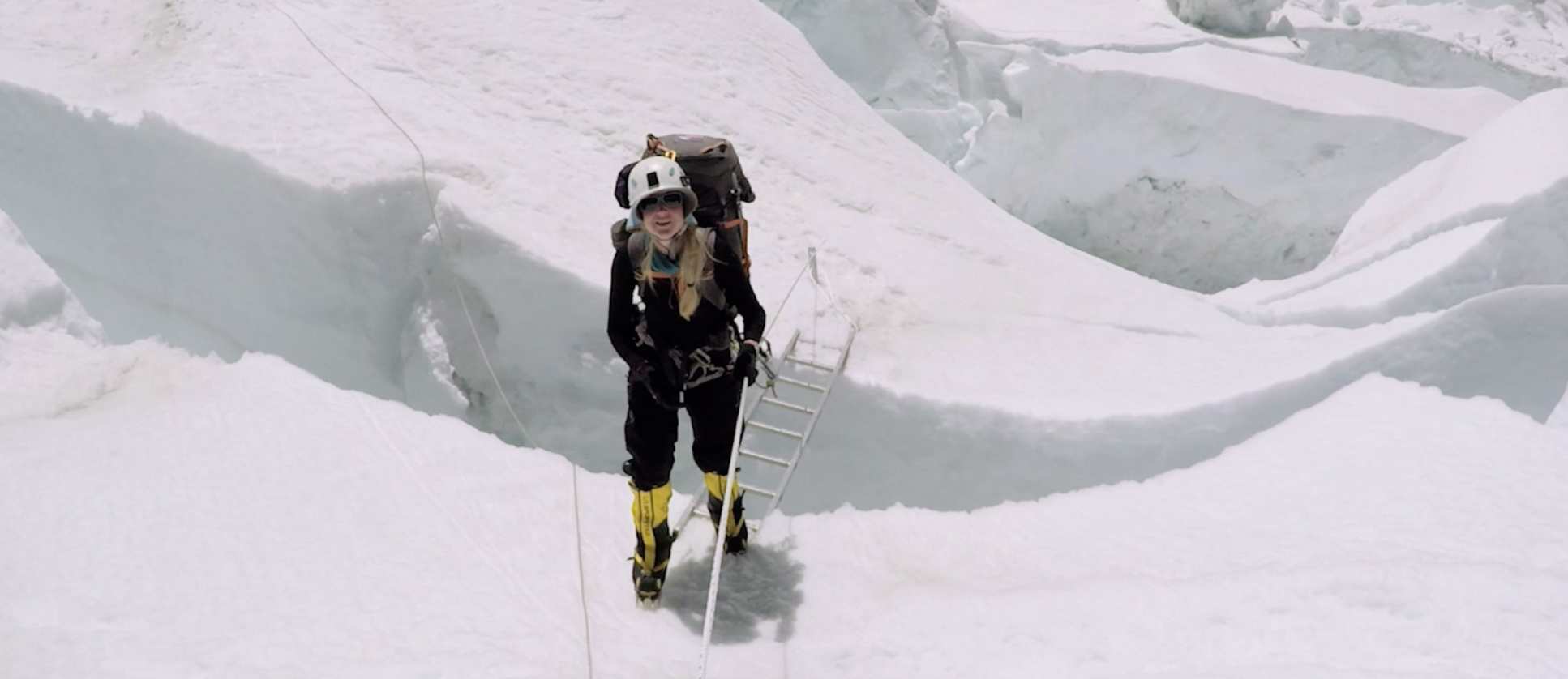
“You’re going across a builder’s ladder with crampons on – it’s not very much fun, so you want to get off as quickly as possible, so as I was coming off I did a big step at the end and skipped a rung and my back crampon caught and it flipped me and I went straight into the snow. I had a go pro camera on my rucksack strap and it bruised my ribs quite badly. It’s not a major deal but I can’t put pressure on my left arm even now.”
But otherwise things went quite smoothly from then on in, aside from the general lethargy of being up so high – “everything is just harder, sometimes you get out of breath just getting up out of the tent”.
Final push
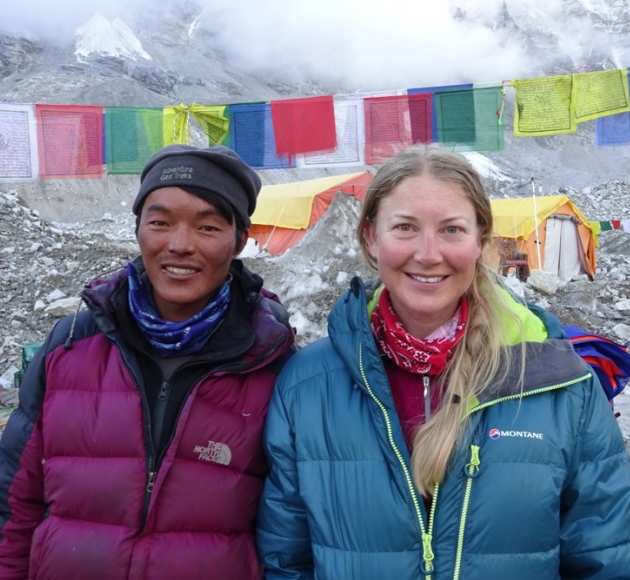 Melanie and her sherpa, Tenzing, set off from Camp 4 at around 21.00 hours on 20 May for the final push for the summit under the cover of darkness, with head torches showing markers and features along the route such as caches of oxygen bottles.
Melanie and her sherpa, Tenzing, set off from Camp 4 at around 21.00 hours on 20 May for the final push for the summit under the cover of darkness, with head torches showing markers and features along the route such as caches of oxygen bottles.
“The track was really narrow and steep, then suddenly it opened up and flattened out and I thought ‘oh my gosh this must be the summit ridge!’ Dawn was just breaking and I could see the colours on the horizon. I was incredibly lucky in that there was nobody else there – just me and Tenzing – and it was perfectly timed, so we sat and rested and watched the light come up a little and took some photos. I didn’t feel elation – you’re only half way there – and I’m very focused so I was just thinking of the things I needed to do up there and then to get down."
“The main thing wasn’t getting to the summit [...] it was seeing and experiencing places that I read about in so many books.
I ask Melanie if the monumental achievement of climbing the world’s highest peaks has changed her outlook on life and general philosophy. But again she’s pragmatic about it and for now is simply focused on those next steps – such as an Everest-sized pile of letters and emails from when she was away and returning to her fusion physics consultancy work.
“The main thing wasn’t getting to the summit – although I’m obviously delighted that I did – it was seeing and experiencing places that I read about in so many books. For example the Western Cwm is a glacial valley at 6000m, hemmed in by Lhoste [8,516m], Nupste [7,861m] and Everest [8,848m]. I’d seen pictures of course but once you enter it, the scale of the place is just unimaginable. If I can capture that beauty – as I tried to do with Aurora - and combine it with some history and science, I will be happy with that.”
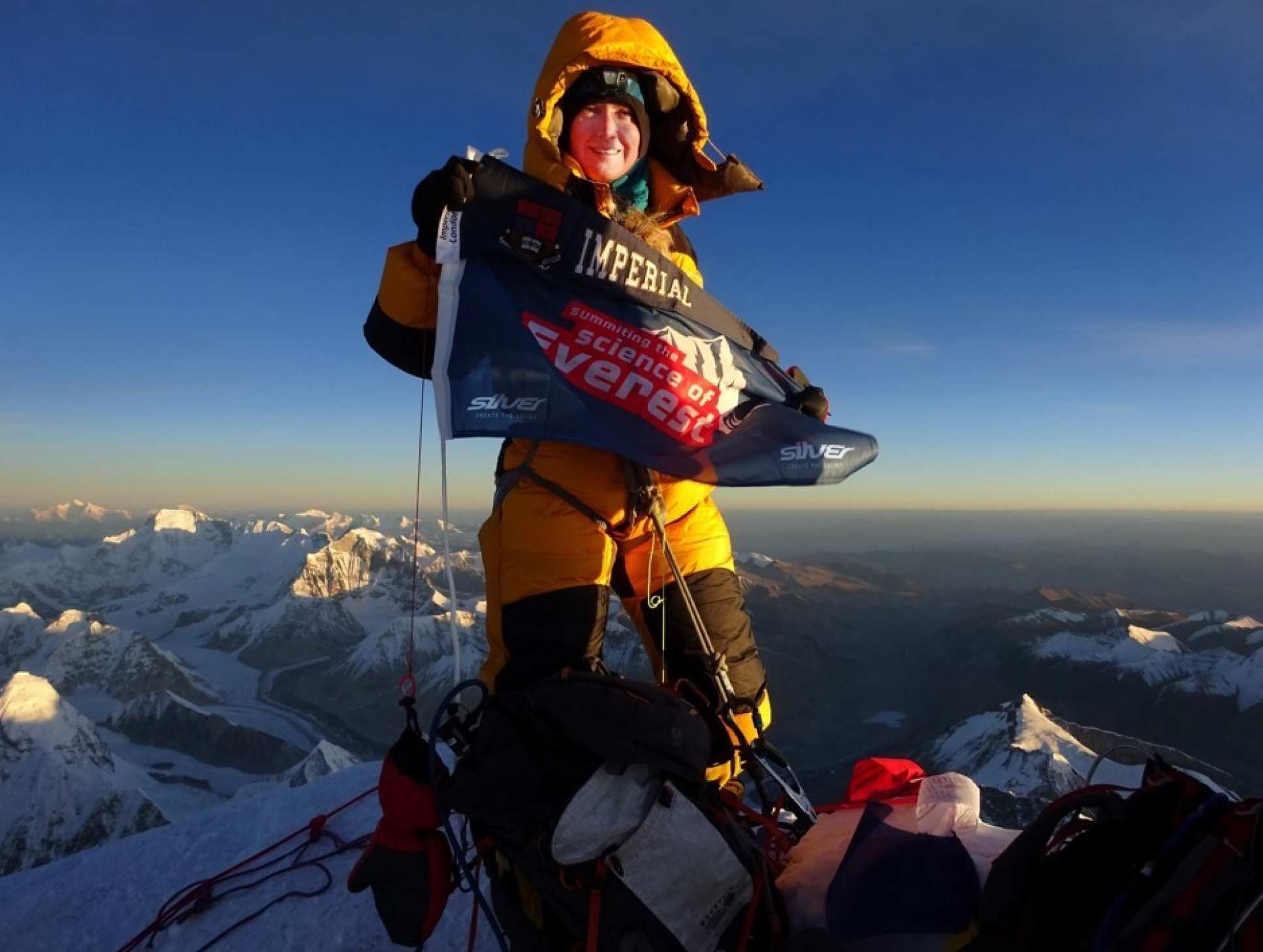
–
Images copyright of Dr Melanie Windridge
Article text (excluding photos or graphics) © Imperial College London.
Photos and graphics subject to third party copyright used with permission or © Imperial College London.
Reporter
Andrew Czyzewski
Communications Division

Contact details
Email: press.office@imperial.ac.uk
Show all stories by this author



